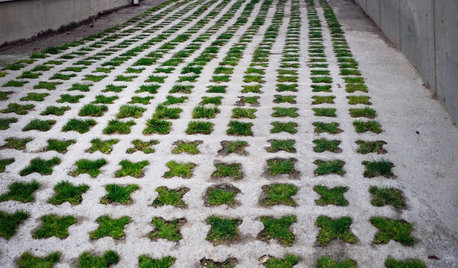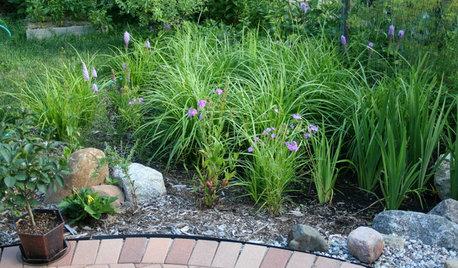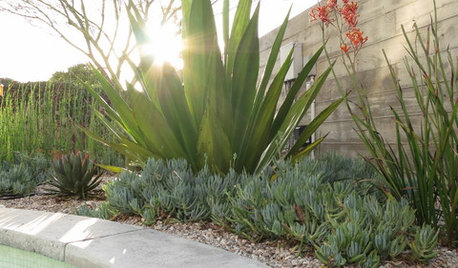Are partially decomposed leaves OK source of carbon?
indigo_tex
10 years ago
Related Stories

GREEN BUILDINGGoing Solar at Home: Solar Panel Basics
Save money on electricity and reduce your carbon footprint by installing photovoltaic panels. This guide will help you get started
Full Story
EARTH DAYHow to Build a Greener Driveway
Install a permeable driveway to keep pollutants out of water sources and groundwater levels balanced
Full Story
LIFEHow to Handle Inherited Things You Don’t Really Want
Whether you’ve inherited a large collection of items or a single bulky piece of furniture, it’s OK to let it go if you don’t need or want it
Full Story
LANDSCAPE DESIGNHow to Site and Size a Rain Garden for Your Landscape
Installing a rain garden is an excellent way to reduce runoff and return water to its source
Full Story
FIREPLACESUpdated Woodstoves Keep Home Fires Burning
Better technology means more efficiency than ever for modern woodstoves
Full Story
BATHROOM DESIGNWarm Up Your Bathroom With Heated Floors
If your bathroom floor is leaving you cold, try warming up to an electric heating system
Full Story
MOST POPULAR11 Nominees for the ‘She Shed’ Hall of Fame
These special sanctuaries let busy women get away from it all without leaving the backyard
Full Story
PLANTING IDEASBig Foliage for Small Spaces
Use bold, large-leaved plants to create intriguing contrast in a garden where they’re least expected
Full Story
FUN HOUZZ31 True Tales of Remodeling Gone Wild
Drugs, sex, excess — the home design industry is rife with stories that will blow your mind, or at least leave you scratching your head
Full Story
HOME TECHBetter, Smarter Smoke Detectors Push All the Right Buttons
No more bashing in that smoke detector with a broomstick at 3 a.m. — if you haven't already yanked it out. Welcome the new, civilized breed
Full Story





klem1
Kimmsr
Related Professionals
Vernon Hills Landscape Architects & Landscape Designers · Winder Landscape Architects & Landscape Designers · Bristol Landscape Contractors · Clark Landscape Contractors · Columbine Landscape Contractors · East Chicago Landscape Contractors · Fort Hunt Landscape Contractors · Kailua Landscape Contractors · Melrose Landscape Contractors · Roseville Landscape Contractors · Boston Decks, Patios & Outdoor Enclosures · Layton Decks, Patios & Outdoor Enclosures · Prichard Decks, Patios & Outdoor Enclosures · Rantoul Decks, Patios & Outdoor Enclosures · Richmond Decks, Patios & Outdoor Enclosuresindigo_texOriginal Author
TXEB
indigo_texOriginal Author
TXEB
indigo_texOriginal Author
TXEB
indigo_texOriginal Author
TXEB
indigo_texOriginal Author
TXEB
indigo_texOriginal Author
toxcrusadr
klem1